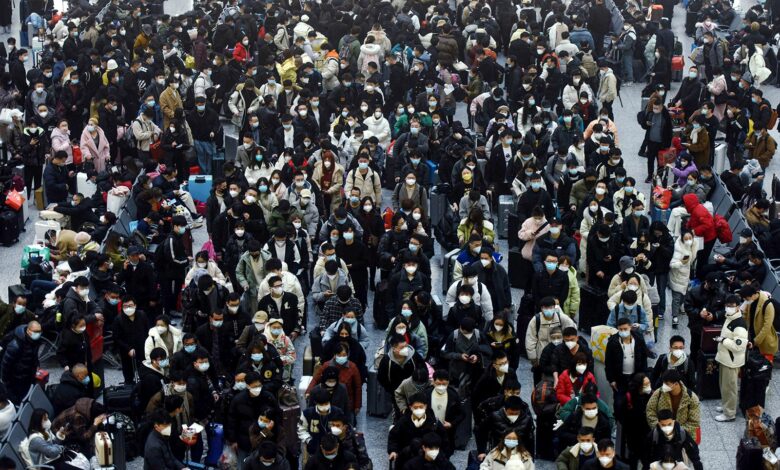China saw 226 million domestic trips during the Lunar New Year holiday, state media reported, a 74% surge from last year after the government lifted all travel curbs under its now-abandoned zero-Covid policy.
For the first time in three years, Chinese people were free to travel without the hassle of quarantine or fear of lockdown for the most important holiday of the year, when families reunite in their hometowns to celebrate the new year or go on vacation together.
The number of trips made inside China during the week-long holiday, which ended on Friday, is the highest since 2020. They include journeys made by all means from flights, trains and cars to boats.
But the figure still fell far below pre-pandemic levels. In 2019, 421 million domestic trips were made over the holiday.
The pent-up demand for travel saw China’s tourist hotspots flooded with crowds during the holiday, from the tropical beaches on Hainan island to the ancient villages in the mountainous Yunnan province.
Overseas travels also skyrocketed after China finally reopened its borders earlier this month. During the Lunar New Year holiday, 2.88 million trips were made across the border, an increase of 120% from last year, according to the National Immigration Administration.
During the Lunar New Year holiday in 2019, 12.53 million cross-border trips were made, the Xinhua news agency reported.
The Chinese government abruptly abandoned its costly zero-Covid policy in December, following mass protests against stringent lockdowns and Covid tests.
The sudden lifting of restrictions saw the virus spread rapidly throughout the country and caught the healthcare system unprepared. Residents were left to scramble for fever medicines and antiviral treatments, while hospitals and crematoriums were overwhelmed.
With once-ubiquitous Covid testing mostly scrapped, the government stopped reporting the majority of infections, making it difficult to assess the severity and scope of the massive outbreak.
Amid international criticism over China’s limited release of data, Chinese health authorities in recent weeks published more detailed epidemic information that suggests the outbreak has already peaked.
On Wednesday, the Chinese Center for Disease Control and Prevention (CDC) said recorded visits to clinics on January 23 had dropped 96.2% from a month earlier, when the peak of cases was reported.
Only 15,000 people tested positive for Covid via PCR tests on January 23, compared to more than 6.9 million on December 22, according to the CDC report.
It’s not clear the extent to which the levels of testing have changed during that time – which could affect such figures – or how many people have been infected overall since China moved away from zero-Covid in early December.
On January 21, the CDC’s top epidemiologist Wu Zunyou estimated that 80% of the country had already been infected.
The officially reported Covid death toll is also in decline. Between January 20 and 26, China registered 6,364 Covid-related deaths, according to the CDC, about half of the 12,658 deaths reported a week earlier.
China revised its overly narrow way of counting Covid deaths earlier this month, following mounting criticism over its lack of transparency – including from the World Health Organization. It now includes the deaths of Covid patients who had underlying conditions, instead of only counting fatalities from respiratory failure.

